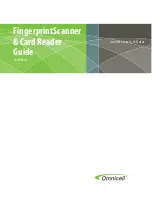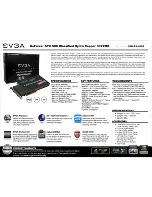
Option Multiple Recording
Recording modes
(c) Spectrum GmbH
73
Option Multiple Recording
The option Multiple Recording allows the acquisition of data blocks with multiple trigger events without restarting the hardware. The on-board
memory will be divided into several segments of the same size. Each segment will be filled with data when a trigger event occures. As this
mode is totally done in hardware there is a very small rearm time from end of the acquisition of one segment until the trigger detection is
enabled again. You’ll find that rearm time in the technical data section of this manual.
Recording modes
Standard Mode
With every detected trigger event one data block is filled
with data. The length of one multiple recording segment is
set by the value of the posttrigger register. The total amount
of samples to be recorded is defined by the memsize regi-
ster.
In most cases memsize will be set to a a multiple of the seg-
ment size (postcounter). The table below shows the register
for enabling Multiple Recording. For detailed information
on how to setup and start the standard acquisition mode
please refer to the according chapter eralier in this manual.
When using Multiple Recording pretrigger is not available.
FIFO Mode
The Multiple Recording in FIFO Mode is similar to the Mul-
tiple Recording in Standard Mode. The segment size is also
set by the postcounter register.
In contrast to the Standard mode you cannot programm a
certain total amount of samples to be recorded. The acqui-
sition is running until the user stops it. The data is read FIFO
block by FIFO block by the driver. These blocks are online
available for further data processing by the user program.
This mode sigficantly reduces the average data transfer
rate on the PCI bus. This enables you to use faster sample rates then you would be able to in FIFO mode without Multiple Recording. Usually
the FIFO blocks are multiples of the Multiple Recording segments.
The advantage of Multiple Recording in FIFO mode is that you can stream data online to the hostsystem. You can make realtime data pro-
cessing or store a huge amount of data to the hard disk. The table below shows the dedicated register for enabling Multiple Recording. For
detailed information how to setup and start the board in FIFO mode please refer to the according chapter earlier in this manual.
Trigger modes
In Multiple Recording modes all of the board’s trigger mo-
des are available except the software trigger. Depending
on the different trigger modes, the chosen sample rate the
used channels and activated board synchronisation (see
according chapter for details about synchronizing multiple
boards) there are different delay times between the trigger
event and the first sampled data (see figure).
This delay is necessary as the board is equipped with dy-
namic RAM, which needs refresh cycles to keep the data
in memory when the board is not recording.
The delay is fix for a certain board setup. All possible
delays in samples between the trigger event and the first re-
corded sample are listed in the table below. A negative
amount of samples indicates that the trigger will be visible.
Register
Value
Direction
Description
SPC_MULTI
220000
r/w
Enables Multiple Recording mode.
SPC_MEMSIZE
10000
r/w
Defines the total amount of samples to record.
SPC_POSTTRIGGER
10100
r/w
Defines the size of one Multiple Recording segment.
Register
Value
Direction
Description
SPC_MULTI
220000
r/w
Enables Multiple Recording mode.
SPC_POSTTRIGGER
10100
r/w
Defines the size of one Multiple Recording segment.
















































